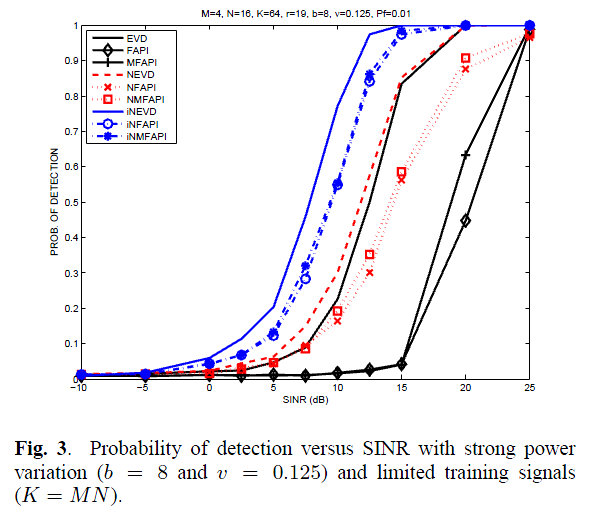TR2011-018
Low Complexity STAP via Subspace Tracking in Compound-Gaussian Environment
-
- , "Low Complexity STAP via Subspace Tracking in Compound-Gaussian Environment", IEEE Radar Conference (RadarCon), DOI: 10.1109/RADAR.2011.5960559, May 2011, pp. 356-361.BibTeX TR2011-018 PDF
- @inproceedings{Wang2011may1,
- author = {Wang, P. and Pun, M.O. and Sahinoglu, Z.},
- title = {{Low Complexity STAP via Subspace Tracking in Compound-Gaussian Environment}},
- booktitle = {IEEE Radar Conference (RadarCon)},
- year = 2011,
- pages = {356--361},
- month = may,
- doi = {10.1109/RADAR.2011.5960559},
- url = {https://www.merl.com/publications/TR2011-018}
- }
- , "Low Complexity STAP via Subspace Tracking in Compound-Gaussian Environment", IEEE Radar Conference (RadarCon), DOI: 10.1109/RADAR.2011.5960559, May 2011, pp. 356-361.
-
Research Area:

Abstract:
This paper considers the subspace tracking approach for low complexity space-time adaptive processing (STAP) in the non-homogeneous compound-Gaussian environment. Specifically, a normalized subspace tracking (NST) and an instantaneously normalized subspace tracking (iNST) detectors are proposed to mitigate the effect of the time-varying texture (power) component on the detection performance and track the subspace of the stationary speckle component. On one hand, the two proposed detectors can be considered as a fast implementation of the normalized eigencanceler by replacing the conventional eigen-decomposition with the subspace tracking techniques. On the other hand, they improve existing subspace tracking-based STAP detectors which mostly deal with homogeneous environment and ignore the power variation among rang bins. Extensive simulations confirm that the proposed detectors are able to provide performance gain over conventional subspace tracking-based STAP detectors in the compound-Gaussian environment.
Related News & Events
-
NEWS IEEE Radar Conference (RadarCon) 2011: publication by Zafer Sahinoglu and others Date: May 23, 2011
Where: IEEE Radar Conference (RadarCon)
Research Area: Signal ProcessingBrief- The paper "Low Complexity STAP via Subspace Tracking in Compound-Gaussian Environment" by Wang, P., Pun, M.O. and Sahinoglu, Z. was presented at the IEEE Radar Conference (RadarCon).